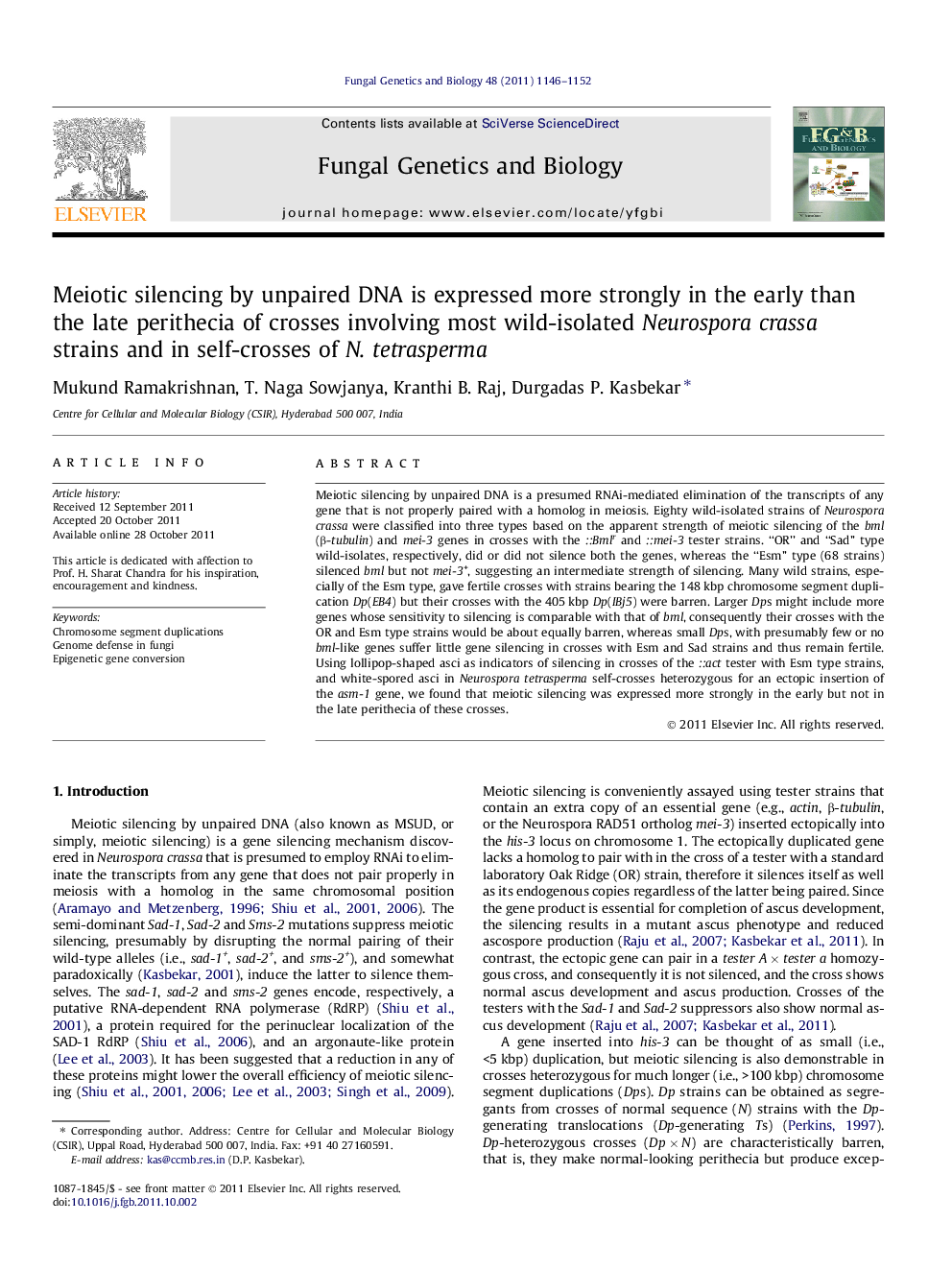| Article ID | Journal | Published Year | Pages | File Type |
|---|---|---|---|---|
| 2180937 | Fungal Genetics and Biology | 2011 | 7 Pages |
Meiotic silencing by unpaired DNA is a presumed RNAi-mediated elimination of the transcripts of any gene that is not properly paired with a homolog in meiosis. Eighty wild-isolated strains of Neurospora crassa were classified into three types based on the apparent strength of meiotic silencing of the bml (β-tubulin) and mei-3 genes in crosses with the ::Bmlr and ::mei-3 tester strains. “OR” and “Sad” type wild-isolates, respectively, did or did not silence both the genes, whereas the “Esm” type (68 strains) silenced bml but not mei-3+, suggesting an intermediate strength of silencing. Many wild strains, especially of the Esm type, gave fertile crosses with strains bearing the 148 kbp chromosome segment duplication Dp(EB4) but their crosses with the 405 kbp Dp(IBj5) were barren. Larger Dps might include more genes whose sensitivity to silencing is comparable with that of bml, consequently their crosses with the OR and Esm type strains would be about equally barren, whereas small Dps, with presumably few or no bml-like genes suffer little gene silencing in crosses with Esm and Sad strains and thus remain fertile. Using lollipop-shaped asci as indicators of silencing in crosses of the ::act tester with Esm type strains, and white-spored asci in Neurospora tetrasperma self-crosses heterozygous for an ectopic insertion of the asm-1 gene, we found that meiotic silencing was expressed more strongly in the early but not in the late perithecia of these crosses.
► We did not see meiotic silencing in crosses involving many wild N. crassa strains. ► Strength of meiotic silencing appeared to decline with the age of the cross. ► Productivity of crosses of wild strains with Dps depended on the Dp size.
